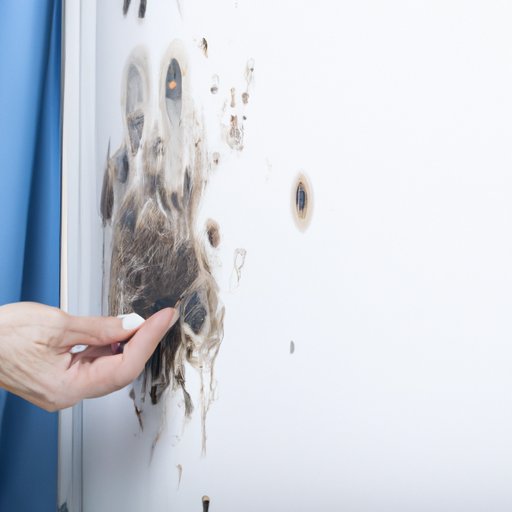
Introduction
Black mold, also known as Stachybotrys chartarum, is a type of toxic fungus that can grow indoors and outdoors. In recent years, there has been a growing concern about its effects on human health and well-being. In this article, we’ll explore the symptoms and health risks associated with black mold exposure, as well as tips for identifying and preventing it from growing in the first place. We’ll also discuss the steps you can take to safely and effectively clean up black mold, and what to do if you encounter legal or insurance issues related to mold exposure. Finally, we’ll look at some alternative treatments for black mold exposure and provide a summary of the main points of the article.
Symptoms and Health Risks
Black mold exposure can lead to a variety of symptoms, including coughing, sneezing, and wheezing. Other symptoms may include headaches, fatigue, and allergic reactions. In some cases, black mold exposure can even lead to serious health conditions like respiratory infections, asthma, and chronic obstructive pulmonary disease (COPD).
Some people may be at higher risk of serious health problems from black mold exposure, including young children, the elderly, and individuals with weakened immune systems. Prolonged exposure to black mold can also lead to more severe long-term health risks, including neurological problems and even cancer.
How to Identify Black Mold
If you suspect you have black mold in your home or workplace, it’s important to know how to identify it. Black mold typically appears as a greenish-black substance that grows in damp, humid environments. It often has a distinct musty or earthy odor, which can be a telltale sign of its presence.
Common areas where black mold tends to grow include bathrooms, kitchens, and basements. Look for areas where there is consistent moisture, like near leaky pipes or in areas that have been affected by water damage. You may also find black mold growing on wallpaper, ceiling tiles, or even in the insulation in your walls or attic.
Tips for Preventing Black Mold
The best way to deal with black mold is to prevent it from growing in the first place. Some tips for preventing black mold growth include:
- Keep indoor humidity levels low (below 50 percent).
- Fix leaks and water damage quickly.
- Use proper ventilation in areas where moisture is present (like bathrooms and kitchens).
- Regularly inspect your home for signs of mold growth and take action early if you find it.
Cleaning Up Black Mold
If you do find black mold in your home or workplace, it’s important to clean it up as soon as possible to prevent it from spreading. However, it’s also important to take proper precautions when doing so, as exposure to black mold can be harmful to your health.
Before you start cleaning, make sure to wear protective gear like gloves, goggles, and a mask. You should also seal off the area where the mold is present to prevent it from spreading throughout your home or workplace.
To clean up black mold, mix a solution of one part bleach to 10 parts water, and use a scrub brush or sponge to apply the mixture to the affected area. Once the mold is removed, make sure to dry the area completely to prevent it from growing back. It’s also important to dispose of any materials that have been contaminated by black mold, like carpet or drywall.
Legal and Insurance Issues
If you have been exposed to black mold in your home or workplace, you may be wondering about your legal and insurance rights. Liability for black mold exposure may fall on your landlord or employer if they were aware of the black mold growth and failed to take action to prevent or remediate it.
It’s also important to note that not all insurance policies cover mold-related damages or health problems. However, some policies might provide coverage, so it’s a good idea to review your policy and speak with your insurance agent if you have questions.
Alternative Treatments
While traditional medical treatments for black mold exposure may include antifungal medications or inhalers to manage respiratory symptoms, some people may choose to explore alternative treatments as well. These may include herbal remedies like oregano oil or garlic, as well as homeopathic remedies such as thujone or borax.
In addition to these treatments, it’s important to support your body’s natural detox processes to rid your body of mold toxins. This may involve eating a healthy diet, staying hydrated, and getting plenty of rest.
Conclusion
Black mold exposure can lead to a range of symptoms and long-term health risks, which is why it’s important to take the necessary precautions to prevent it from growing in your home or workplace. If you do encounter black mold, it’s important to clean it up safely and effectively, and to seek medical attention if you experience any symptoms. With proper prevention and treatment, you can mitigate the risks associated with black mold exposure and protect your health.





